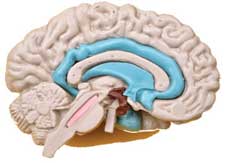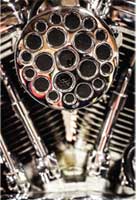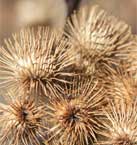January/February 2017
Brain Power
BY STUART G. WALESH, PH.D., P.E., F.NSPE
 In their books, engineer-authors Samuel Florman and Henry Petroski explored the origins of the word “engineer.” The two PEs followed different routes but arrived at the same destination: “Engineer” has its linguistic roots in creativity. Simply put, “to engineer” means “to create, to innovate.” Engineering achievements from the beginning of recorded history testify to our profession’s creativity and innovation.
In their books, engineer-authors Samuel Florman and Henry Petroski explored the origins of the word “engineer.” The two PEs followed different routes but arrived at the same destination: “Engineer” has its linguistic roots in creativity. Simply put, “to engineer” means “to create, to innovate.” Engineering achievements from the beginning of recorded history testify to our profession’s creativity and innovation.
However, we cannot rest on our laurels. US engineers, in particular, are challenged in many ways to proactively lengthen the evolutionary chain of creative-innovative accomplishments. For starters, our National Academy of Engineering identified 14 challenges, some of which are way beyond what US engineers have faced. Then we must consider the role of US-based engineers and other professionals on the global stage. Futurist Daniel Pink says work done on that stage in the US that “can be reduced to a set of rules, routines, and instructions,” the algorithmic functions of the left brain, is “migrating across the oceans…. Now that foreigners can do left-brain work cheaper, we in the US must do right brain work better.” Better means more creative-innovative engineering, more whole-brained approaches.
Decades of working in the academic and practice sectors have given me numerous opportunities to review the credentials, attitudes, and accomplishments of engineering students (they are among the brightest and most focused members of academic communities) and young practitioners. We and they should practice better stewardship with this treasure—these young people—and one way to do that is to help them develop greater creative-innovative knowledge, skills, and attitudes. Finally, we should renew our creative-innovative efforts in response to the magnet that attracted many of us to engineering, namely creating or building things that had never existed. With some help, many more of us can experience the thrill of doing what has not been done.
Lest there be any misunderstanding, I am not saying that the US engineering glass is less than half full. To the contrary, the glass is more than half full, but given the changing and challenging global social-economic-political situation, we should and can fill it.
Learn About Our Thinker
If we want to work smarter as engineers, that is, be more effective, creative, and innovative, then the time is right to study brain basics. Science has learned more about the human brain in the last one or two decades than in the last one or two centuries. Neuropsychologist Paul Nussbaum said, “There is perhaps no greater untapped resource in the universe than the human brain” and goes on to state that the human brain is no longer the domain of medicine and academia. It’s engineering’s domain in that we can develop and then use mental literacy.
You may be thinking that we risk going off on a tangent. You want to be a good to great engineer, not a brain surgeon. I am not advocating brain surgeon breadth and depth of knowledge. Instead, let’s be open to learning brain basics—how that three-pound marvel between our ears works and how to use it. Symbolically, let’s enroll in Neuroscience 101.
Consider an analogy: You finally bought your dream 40-year old sports car and the engine is running rough. Therefore, you Google articles, read about the engine, talk to people with similar vehicles, experiment with aspects of the electrical and fuel systems, and solve the problem. You didn’t have to become a certified auto mechanic to get better engine performance. Similarly, you don’t have to become a brain surgeon to make better use of your brain.
What should we know about our brain? Besides appreciating that it may be the most magnificent mechanism in the universe, understand that we have left and right hemispheres, each with very different capabilities; the right side is typically underutilized by engineers. We also have conscious and subconscious minds with the partnership having great creativity-innovation interaction potential. Unlike our parallel-processing subconscious minds, our conscious minds can do only one task at a time. Our brains are now known to be neuroplastic, like muscles—they can grow stronger. Habits, under control of our subconscious minds and largely without our awareness, control half or more of what we think, say, and do. Our brain’s natural evolving negativity bias steers us away from career-changing opportunities. In similar negative fashion, our brain’s design fixation—in which we “fix” on previous similar problems, note how they were solved, and design the solution to the current problem in a similar manner—causes us to not even consider fundamentally new ideas.
A heavy learning load? No. You probably learned the fundamentals of engineering science subjects such as static mechanics, circuits, and materials. The effort required to understand the fundamentals of any of those topics and then apply them is much greater than coming to grips with Neuroscience 101, as described earlier. By learning more about how your brain works, you will be more effective, creative, and innovative.
Neuroscience at Work
So we need to continue the US engineering creativity-innovation tradition, especially on the changing and challenging global social-economic-political stage. Performing effectively on that stage requires mental literacy. Consider some ways in which Neuroscience 101 will help you, individually and working with others, be more effective, creative, and innovative:
- Articulate and achieve ambitious individual and organizational goals by using the powerful interactions between your conscious and subconscious minds.
- Replace disabling bad habits with productive good habits because habits dominate—they control half or more of what you think, say, and do. Mental literates understand and use the conscious-subconscious cue-routine-reward process to replace bad with good habits.
- Take multitasking to task because neuroscience shows that multitasking markedly increases the absolute time needed to complete a task and greatly increases errors. Why would you want to incur either of those costs?
- Offset the mentally confining and opportunity-missing effects of the brain’s design fixation tendency, that is, your brain’s desire to use what has worked in the past to the exclusion of even considering creative-innovative options.
- Reject the role that the brain’s negativity bias plays in preventing you from weighing the pros and cons of unexpected and potentially creative, innovative, and productive opportunities. Instead, proactively consider such situations unencumbered by knee-jerk reactions.
- Revise the format of slides and other visuals used in presentations in recognition of vision being the dominant of the six senses controlled by the brain. Recent research shows how the brain understands visual and text messages and the results are at odds with the templates built into slide software.
- Commit to being a life-long learner—a perpetual student—because research reveals that mentally active individuals are much less likely to experience dementia, especially Alzheimer’s.
- Apply some whole-brain tools that stimulate individuals to think wider and deeper and teams or groups to collaborate by leveraging their diversity. Focus first on defining an issue, problem, or opportunity and then generate possible resolutions of it. Examples of many whole-brain tools I’ve discovered are borrowing brilliance, fishbone diagramming, mind mapping, what-if scenarios, biomimicry, six thinking caps, and the theory of inventive problem solving, all of which you can learn more about online.
Each of us gets to “go around once” in our engineering careers. We have the power to make that trip a creative-innovative whirl. Draw on our intellect, education, membership in a people-serving profession, and ability to access mental literacy. Then we and those we collaborate with will, at least most of the time, do great work.
 Stuart G. Walesh, Ph.D., P.E., F.NSPE is the author of Introduction to Creativity and Innovation for Engineers (Pearson 2016) on which this article is based.
Stuart G. Walesh, Ph.D., P.E., F.NSPE is the author of Introduction to Creativity and Innovation for Engineers (Pearson 2016) on which this article is based.
Characteristics of Creative-Innovative Individuals
So, what’s so special about creative-innovative individuals, more specifically engineers? Study and experience tell me that they tend to have at least several supportive characteristics. We might expect a few unusual characteristics—some silver bullets—that set the creative and innovative ones apart from the rest of us. That is not the case. Creators and innovators have sets of common human characteristics but know how, in a given situation, to mix and match and then intensely apply them. Consider some examples:
Empathetic and Collaborative

Engineer Timothy Prestero and his team were saddened when learning in 2008 about the massive deaths of newborn babies in developing countries. Although incubators were sometimes available, they soon failed and locals lacked the skills and parts needed to repair them. The team created an incubator assembled from automobile and motorcycle parts (e.g., headlight for heat, dashboard fan to circulate air) that, therefore, could be locally repaired.
Studious and Persistent

After returning from a hunting trip about 75 years ago, Swiss engineer George de Mestral wondered why burrs stuck to his and his dog’s coats. Being the curious type, he studied the burrs with his microscope, discovered many hooked spines, and conceived the idea for a new type of fastener. After 10 years of effort, he brought Velcro to market.
Experimentalist and Collaborative

In the late 1990s, Japan’s safe, efficient, and comfortable high-speed trains caused a problem on some lines. When the bullet-nosed trains entered tunnels, they compressed the air, and, upon exiting, the compressed air expanded rapidly, producing an annoying loud sound-—a tunnel boom. Because Eiji Nakatsu, the railroad’s chief engineer, was also a birder, he was aware of very different bird beaks. He led a team that experimented by firing different shaped bullets, inspired by bird beaks, through a pipe until they found the shape that caused the least tunnel boom. The next new train had a lead unit shaped like a Kingfisher’s beak.
Passionate and Persistent

Engineer Joseph Strauss dreamed of bridging San Francisco’s Golden Gate and knew, even in the face of widespread skepticism, that it could be done. For 20 years, he passionately and persistently pursued his dream by leading the planning, design, finance, and construction of the now icon. Strauss participated in the 1937 opening and died one year later.


 Volunteering at NSPE is a great opportunity to grow your professional network and connect with other leaders in the field.
Volunteering at NSPE is a great opportunity to grow your professional network and connect with other leaders in the field. The National Society of Professional Engineers (NSPE) encourages you to explore the resources to cast your vote on election day:
The National Society of Professional Engineers (NSPE) encourages you to explore the resources to cast your vote on election day:
